
CLINICAL PHYSIOLOGY AND FUNCTIONAL IMAGING
Scope & Guideline
Unveiling the complexities of human health through innovative research.
Introduction
Aims and Scopes
- Clinical Imaging Techniques:
The journal publishes research on advanced imaging modalities such as PET, MRI, CT, and ultrasound, highlighting their use in diagnosing and managing various diseases. - Physiological Measurements and Assessments:
There is a strong emphasis on studies that involve physiological assessments, including cardiac function, muscle performance, and respiratory parameters, often utilizing innovative measurement techniques. - Interdisciplinary Approaches:
Research often combines insights from cardiology, endocrinology, sports medicine, and rehabilitation, showcasing the interdisciplinary nature of clinical physiology and functional imaging. - Innovative Methodologies:
The journal is known for publishing studies that explore new methodologies, such as AI applications in imaging, wearable technology for physiological monitoring, and novel exercise interventions. - Clinical Applications and Patient Outcomes:
A significant focus is placed on how physiological and imaging assessments can improve patient outcomes, particularly in chronic disease management, rehabilitation, and surgical interventions.
Trending and Emerging
- AI and Machine Learning in Imaging:
There is a growing emphasis on the application of artificial intelligence and machine learning techniques to enhance imaging analysis, improve diagnostic accuracy, and personalize treatment options. - Wearable Technology and Remote Monitoring:
The rise of wearable devices for continuous physiological monitoring is a significant trend, with studies focusing on their integration into clinical practice for managing chronic conditions. - Functional Assessments in Chronic Disease Management:
Research increasingly emphasizes the importance of functional assessments, such as exercise capacity and muscle performance, to guide treatment and rehabilitation strategies for chronic diseases. - Multimodal Imaging Approaches:
Emerging studies are focusing on combining multiple imaging modalities (e.g., PET/MRI) to provide comprehensive insights into disease mechanisms and improve diagnostic capabilities. - Interventions Targeting Specific Populations:
There is an increasing focus on tailored interventions for specific populations, such as older adults, individuals with obesity, or those with specific cardiovascular conditions, highlighting the importance of personalized medicine.
Declining or Waning
- Basic Pathophysiological Mechanisms:
Research solely focused on basic pathophysiological mechanisms without clinical applications has become less prevalent, as the journal leans towards studies with direct clinical relevance. - Traditional Diagnostic Techniques:
There is a noticeable decline in studies centered on traditional diagnostic techniques that do not incorporate advanced imaging or functional assessments, as the field moves towards more integrated approaches. - Single Modality Studies:
Papers focusing exclusively on a single imaging modality without exploring its clinical implications or comparisons with other methods are appearing less frequently, indicating a trend towards comprehensive and multimodal assessments. - General Population Studies:
The journal is increasingly prioritizing research that targets specific patient populations or conditions rather than general population studies, which are becoming less common. - Static Measurements:
Research involving static physiological measurements, such as fixed assessments of muscle mass or strength, is declining in favor of dynamic and functional assessments that provide more actionable insights.
Similar Journals
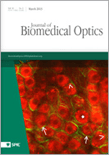
JOURNAL OF BIOMEDICAL OPTICS
Transforming Healthcare Through Optical EngineeringJOURNAL OF BIOMEDICAL OPTICS, published by SPIE-SOC PHOTO-OPTICAL INSTRUMENTATION ENGINEERS, is a premier Open Access journal that has been at the forefront of research in the fields of optical engineering and biomedical applications since its inception in 1996. With an impressive range of studies that span atomic and molecular physics, biomedical engineering, and biomaterials, this journal is consistently recognized for its high-quality publications, evidenced by its Q1 quartile ranking in 2023 for Atomic and Molecular Physics and Optics. The journal’s impact is further validated by its Scopus rankings, placing it in the top 30% of its categories. Designed to facilitate rapid dissemination of innovative advancements in biomedical optics, this journal promotes an interdisciplinary approach, making it an essential resource for researchers, professionals, and students aiming to advance their knowledge and applications of optical technologies in medicine. The journal is committed to broadening access to groundbreaking research, having transitioned to Open Access in 2019, ensuring that the latest findings are available to a global audience.
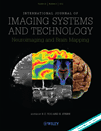
INTERNATIONAL JOURNAL OF IMAGING SYSTEMS AND TECHNOLOGY
Advancing Imaging Knowledge for Tomorrow's InnovationsINTERNATIONAL JOURNAL OF IMAGING SYSTEMS AND TECHNOLOGY, published by Wiley, is a leading journal dedicated to advancing the field of imaging systems and technologies. With an ISSN of 0899-9457 and E-ISSN 1098-1098, this esteemed journal offers a platform for high-quality research spanning essential interdisciplinary areas, including Biomedical Engineering, Computer Science, and Health Informatics. Recognized for its impactful contributions, it holds a commendable position in the Q2 quartile across multiple categories as of 2023. The journal boasts an excellent Scopus ranking, with notable acknowledgments like rank #49 out of 333 in Radiology, Nuclear Medicine, and Imaging, showcasing its relevance and importance in the academic community. Publishes annually from 1989 to 2024, it aims to bridge gaps in knowledge and foster innovative developments through rigorous peer-reviewed articles. Though it operates under a traditional access model, the journal maintains an accessible repository of cutting-edge research, making it indispensable for researchers, professionals, and students alike seeking to stay at the forefront of imaging technology advancements.
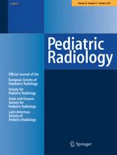
PEDIATRIC RADIOLOGY
Exploring the future of pediatric radiology.Pediatric Radiology is a leading journal published by Springer that provides a crucial platform for the dissemination of research in the fields of pediatrics, perinatology, and radiology. Since its inception in 1973, the journal has continually contributed to the advancement of medical imaging techniques and their application in diagnosing and treating pediatric conditions. With its impact factor reflecting a Q2 ranking in both Pediatrics and Radiology categories as of 2023, Pediatric Radiology is highly regarded in scholarly circles, aiding researchers, clinicians, and students to stay at the forefront of innovations and findings in the field. Although the journal does not offer open access, it continues to be an essential resource for evidence-based information that enhances clinical practice and improves health outcomes for children globally. The journal's reach is further established through its solid Scopus rankings, indicating its relevance and influence in the global medical community.
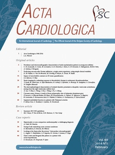
ACTA CARDIOLOGICA
Pioneering insights in cardiology and cardiovascular medicine.ACTA CARDIOLOGICA is a distinguished journal published by TAYLOR & FRANCIS LTD, focusing on the dynamic fields of Cardiology and Cardiovascular Medicine. Established in 1946, the journal has maintained a significant presence in the academic community, providing a platform for cutting-edge research and clinical studies that aim to address challenges in cardiovascular health. With its Q3 rating in both Cardiology and General Medicine categories, it showcases a robust compilation of articles that reflect the evolving landscape of cardiac care. Although ACTA CARDIOLOGICA is not an Open Access journal, it continues to serve a vital role for researchers, professionals, and students dedicated to advancing knowledge in cardiovascular health. This journal, with an ISSN of 0001-5385 and E-ISSN of 1784-973X, is a critical resource for those looking to stay updated on the latest developments and practices in the specialization, contributing significantly to the field until 2024 and beyond.

Radiology-Imaging Cancer
Empowering Oncology with Innovative Imaging Solutions.Radiology-Imaging Cancer is a prestigious journal published by the Radiological Society of North America (RSNA), focusing on the critical intersection of radiology, oncology, and advanced imaging techniques. This journal stands out in its field with a commendable ranking in the Q2 category for Medicine (miscellaneous) and Oncology, and an impressive Q1 ranking in Radiology, Nuclear Medicine and Imaging, according to the 2023 quartiles. With an ISSN of 2638-616X, it serves as an essential platform for the dissemination of research that contributes to the understanding and improvement of cancer diagnosis and treatment. Its comprehensive scope encompasses a range of topics, from innovative imaging modalities to clinical applications in oncology, making it a valuable resource for researchers, clinicians, and students interested in the evolving field of cancer imaging. Despite being published in the United States, the journal aims for a global reach, catering to a wide audience dedicated to advancing medical science.
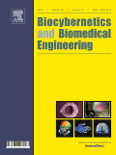
Biocybernetics and Biomedical Engineering
Innovating for Better Patient OutcomesBiocybernetics and Biomedical Engineering, published by ELSEVIER in the Netherlands, is a prestigious journal that stands at the forefront of the intersecting fields of biomedical engineering and artificial intelligence. With an impressive Impact Factor that places it in the Q1 category for Biomedical Engineering, this journal not only ranks 17th out of 303 in Scopus but also boasts a remarkable percentile ranking of 94th, highlighting its influence and relevance within the scientific community. Since its inception in 2008, Biocybernetics and Biomedical Engineering has aimed to publish cutting-edge research that integrates principles of cybernetics with technological advancements in health care, thereby fostering innovations that improve patient outcomes. Dedicated to advancing knowledge in biomedical technology, the journal serves as a vital resource for researchers, professionals, and students seeking to explore the latest developments and methodologies in the field.
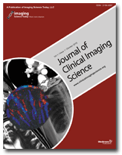
Journal of Clinical Imaging Science
Advancing the Frontiers of Clinical Imaging ResearchWelcome to the Journal of Clinical Imaging Science, a dedicated platform for disseminating pioneering research in the field of radiology, nuclear medicine, and imaging. Published by SCIENTIFIC SCHOLAR LLC, this peer-reviewed journal offers a prominent forum for researchers, professionals, and students to share insights and advancements that push the boundaries of clinical imaging practice and technology. With a proud history of publication since 2011 and converged years extending through 2024, the journal currently ranks in the top quartile (Q3) as per the 2023 categorization in the relevant field, positioning itself as a valuable resource among its peers. While embracing a non-open access model, it guarantees high-quality content that contributes to the 36th percentile of Scopus rankings for medicine and imaging sciences. The Journal of Clinical Imaging Science aspires to enhance the knowledge base in clinical settings and promote innovative methodologies, serving as an essential tool for advancing education and practice in imaging sciences.
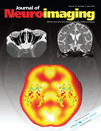
JOURNAL OF NEUROIMAGING
Exploring Innovations in Clinical ImagingJOURNAL OF NEUROIMAGING, published by Wiley, serves as a premier platform for advancing knowledge in the fields of neurology, radiology, and clinical imaging. With its ISSN 1051-2284 and E-ISSN 1552-6569, the journal spans influential research dating from 1991 to 2024, making it an essential resource for professionals and researchers engaged in neuroimaging. It holds a commendable position in Quartiles—ranking Q2 in both Medicine (miscellaneous) and Neurology (clinical), and Q1 in Radiology, Nuclear Medicine, and Imaging as of 2023. The journal's standing in the Scopus rankings, particularly its percentile ranks of 68th and 60th in their respective categories, underscores its impact within the academic community. Although it does not offer open access, it remains pivotal for disseminating high-quality, peer-reviewed research that enriches the understanding of neuroimaging techniques and their clinical applications. The JOURNAL OF NEUROIMAGING is an invaluable resource for scholars seeking to contribute to the evolving landscape of medical imaging and neurodiagnosis.
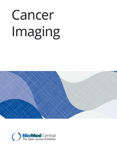
CANCER IMAGING
Illuminating Innovations in Oncology ImagingCANCER IMAGING, published by BMC, stands as a leading open-access journal in the realms of oncology and medical imaging, significantly contributing to the advancement of cancer research since its inception in 2000. With an impressive impact across multiple domains—most notably ranking Q1 in prestigious categories such as Medicine (miscellaneous), Oncology, and Radiology—this journal ensures high visibility and influence within the academic community. As of 2023, it is recognized in various Scopus rankings, securing top positions in the fields of Radiology, Nuclear Medicine, and Imaging, alongside Radiological and Ultrasound Technology. The journal's commitment to open-access publication, adopted in 2014, enhances accessibility for researchers, healthcare professionals, and students alike, fostering an inclusive environment for sharing critical advancements and innovative methodologies in cancer imaging. Set in the vibrant landscape of the United Kingdom, CANCER IMAGING continues to play a vital role in elucidating the complexities of cancer diagnostics and treatment, establishing itself as an essential resource for those pursuing excellence in cancer care and research.

SKELETAL RADIOLOGY
Exploring Innovations in Musculoskeletal RadiologySkeletal Radiology, published by Springer, is a preeminent journal dedicated to the field of radiology, specifically focusing on the anatomical and pathological aspects of the skeletal system. Covering a breadth of topics from imaging techniques to innovative diagnostic methodologies, it aims to enhance knowledge and expertise in the interpretation of musculoskeletal conditions. Operating under the ISSN 0364-2348 and E-ISSN 1432-2161, the journal has established itself as a key resource for researchers, clinicians, and medical professionals, boasting an impressive impact factor that reflects its scholarly significance. As of 2023, it holds a commendable ranking in the Q2 quartile for Radiology, Nuclear Medicine and Imaging, and ranks #123 out of 333 in the Scopus database, placing it in the 63rd percentile. With a history spanning from 1976 to 2024, this journal continually seeks to publish high-quality research that advances the understanding of skeletal radiology. While it does not currently offer Open Access options, its rigorous peer-review process ensures that only the most relevant and impactful studies are shared with the global academic community.